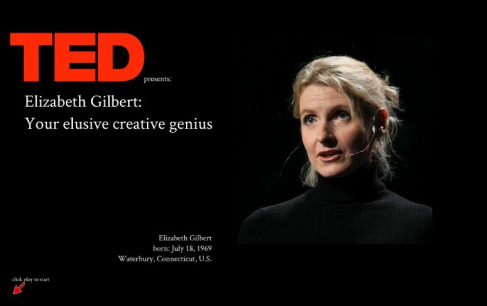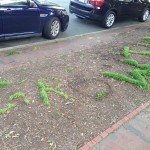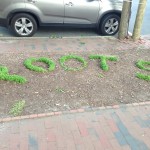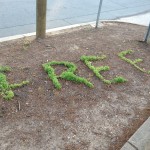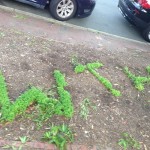The Food Font project is officially launched and promotion to let people know about the project has begun.
Here is information from the official press release:
Want to play and write with your food? Ever wish you could express your thoughts and ideas in kale, vending machine food, or in summer vegetables? Food Font is an interactive art project where people can make alphabets out of food, take pictures of each letter, and later use these and other food alphabets to make images and designs.
Baumlier intends for the Food Font activity and tool to be used by a variety of groups. “This is something that farmer’s markets, community gardens, teachers and students in the classroom, restaurants, and a group of friends or family can do,” Baumlier noted. The project supports dialogue and builds community around food, health, and sustainability.
Food Font’s Beginnings
In the past 2 years, Baumlier has done over 15 public events at various locations in Ohio, North Carolina, Wisconsin, Pennsylvania, and New York where visitors created letters out of local in-season ingredients. The artist behind the project is Kristen Baumlier, an interdisciplinary artist who is based in Durham, NC. For several years Baumlier has been doing projects that explore food and sustainability. When asked how the project started, Baumlier said that, “I was doing work in my studio where I was photographing words and letters out of food. I realized that this process had potential to be fun and an interactive way to promote discussion and build community around food.”
How It Works
On the Food Font website there are resource materials for organizing a Food Font event; materials for teachers; and resources to help you make a food alphabet or organize your own Food Font event. The Food Font alphabets are free and available for anyone to use in the form of printed .pdf files, editable Microsoft Word files, and as jpeg file that you can use with free online collage tools. Baumlier hopes that the images will be used to create images, posters, signs, and other printed materials that promote discussion about food and health.
Over 1200 letters have been created so far and include a letterform set made of kale, French fries, tomatoes, vending machine food, and fresh summer vegetables. When a food alphabet is submitted to the Food Font site, an alphabet name and event information is inputted. This information will visible to users who will be able to use their own food alphabets as well as those made from about other individuals, groups, and businesses.
Food Alphabets are Free to Use
“I’m really excited to see what people will make,” said Baumlier. All Food Alphabets files are licensed with Creative Commons, which is a non-profit organization devoted to expanding the range of creative works available for others to build upon legally and to share. The Food Font images use the Creative Commons Attribution 4.0 International License, which allows anyone share, adapt, and use for any purpose, even commercially.
The Food Font alphabets have already been used by a variety of non-profit groups that include a hospital in the U.S., a cooking magazine in Turkey, a community garden society in England, and by a Danish food bank. Artists and entrepreneurs have also used the alphabets. Artist Shannon Castor used the Food Font letters to create t-shirt designs for her Etsy shop that includes a t-shirt that says “CORNY” on the front, made of the Food Font corn alphabet made by visitors to the Ingenuity Festival in Cleveland.
Baumlier is currently sharing the project with educators, farmer markets, non-profits, and others who might want to participate in either making a food alphabet that would become part of the project or would want to use the Food alphabets in creative ways. She also is scheduling some Food Font events for 2015.
For more information, goto FoodFont.com

